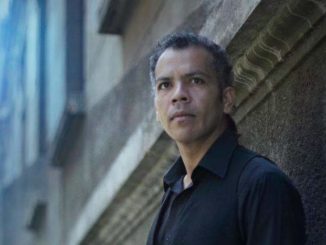
Not long ago, we discovered that the city of Paris had elected in 1879 a black mayor of Cuban origin, Severiano de Heredia ( 1836-1901 ), a politician forgotten by the Republic who would be the cousin of the famous poets José María de Heredia y Campuzano (1803-1839) and José-Maria de Heredia (1842-1905).The film“Chocolat” screened in French cinemas (thus also in those of French Caribbean), from last February 3rd, 2016, played by French actor, of Malian origin, Omar Sy and d irected by Roschdy Zem, highlighted the career of another Cuban, the artist-clown Rafael Padilla, an ex-slave in the Paris of the “Belle Epoque”.
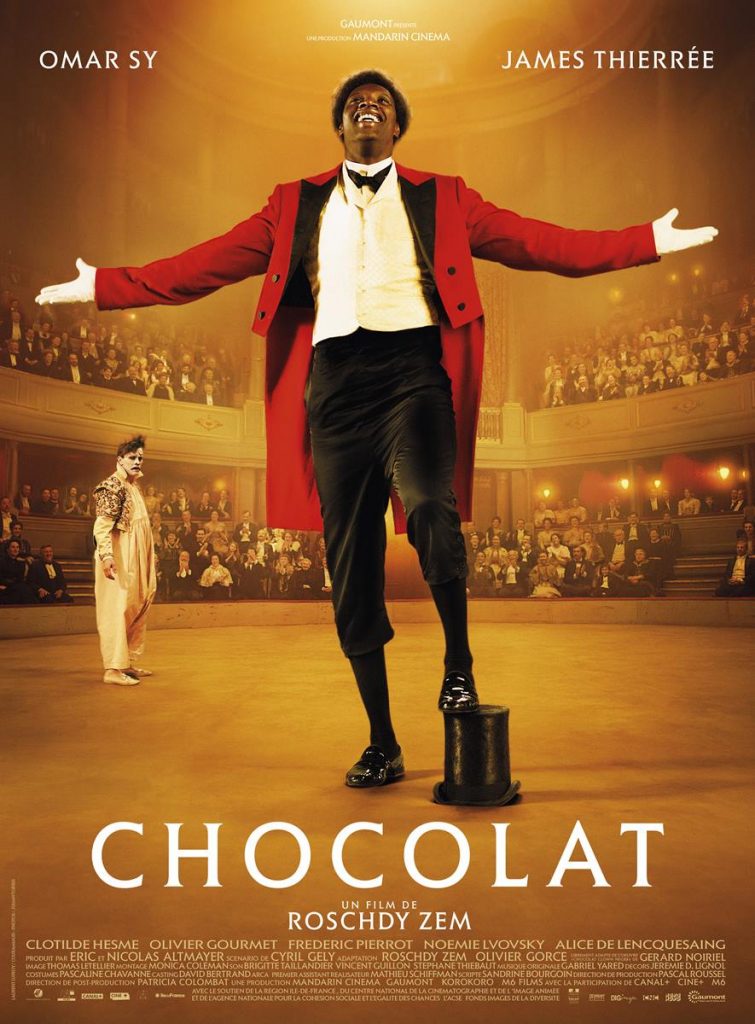
Born a slave in Cuba between 1865 and 1868, Rafael would have had several patronymics such as Leios, Patodos but it is Padilla that is written on his death certificate, the name of his Spanish master’s wife. His arrival in Europe is rather fantastic. After they escaped from a Cuban plantation in 1878, his parents leave him with an old woman in Havana who sells him for peanuts to a merchant’s mother from Bilbao. The little boy who is now a stable boy, really becomes aware of his difference when Basques want to wash him with a brush for horse in order to lighten his black skin… He flees again and he makes odd jobs (baggage handler, miner etc.) to survive.
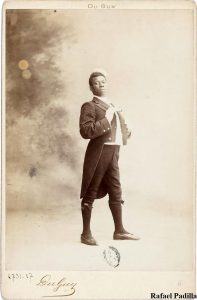 Chocolate is born
Chocolate is born
His clown’s career begins with Tony Grice called the “White clown” who nicknames him “Chocolate” (at that time, it is a nickname attached to black people when it is not “Bamboula”) during their brief collaboration in the Nouveau Cirque de Paris. In 1888, Rafael is hired by this circus to play acts with well-known clowns as Gerónimo Medrano and he eventually has his own show called “La Noce de Chocolat” (The Weeding of Chocolate) which brings him fame. From 1895 and during twenty years, he forms a comic team with George Foottit, an English clown. In the various sketches, the latter plays the role of the authoritarian whitefaced clown while Rafael Padilla is the black Augustus or the stupid Negro and the punch-bag who receives slaps even if he fights this negative image during his career. In this period, he meets Marie Hecquet (a secretary native of Picardy), mother of two children, who becomes his partner.
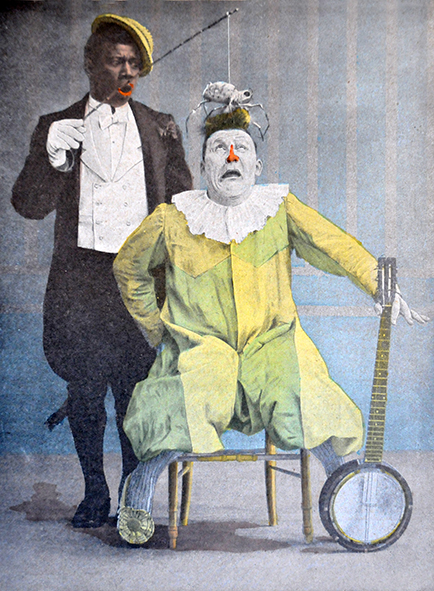 Healing by laughter
Healing by laughter
From 1901 to 1905, the duet innovates by integrating dialogues into its shows, in particular in “Deux Bouts de Bois” (Two pieces of wood). After a spell at the Folies Bergères, both clowns go back the Nouveau Cirque in 1909 with “Chocolat Aviateur” (Chocolate Airman), their success is still intact but, next year, they separate.
Meanwhile, the character of “Chocolate” inspires the current illustrators and painters such as Henri Toulouse-Lautrec and Edmond Heuzé. The brands Félix Potin for the chocolate or Michelin for the tyres and the “Bon Marché” department store use its image for advertising media.
Rafael Padilla tries to become a theatre actor what is not easy because he doesn’t speak French very well. Then, he comes back to the circus, to earn a living, by playing among others in “Tablette et Chocolat” (1912) with his adopted son, Eugène, and goes to hospitals to entertain sick children. He is the first clown to launch laugh therapy.
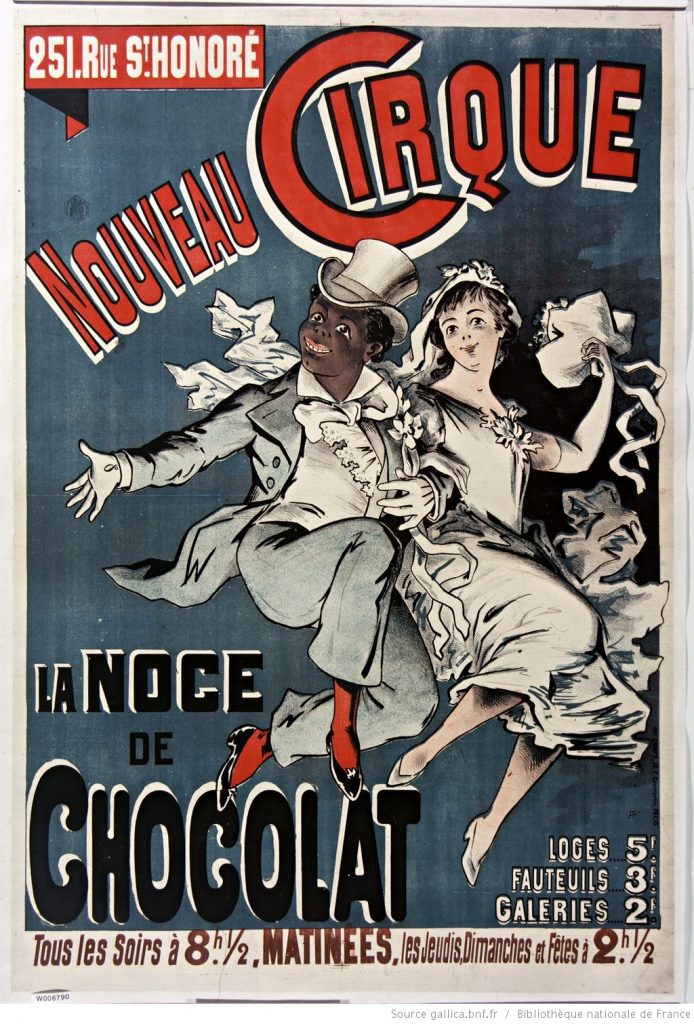 A forgotten clown
A forgotten clown
Although he spent his life entertaining the others, unfortunately he doesn’t find anyone to ease his pain when dies Suzanne, his 19-year-old adopted daughter. The clown Rafael dies in poverty and alcohol, on November 4th, 1917 at the age of 49, while he is on tour with the Cirque Rancy in Bordeaux. He is buried in the Protestant cemetery of the city in the place reserved for poor people.
During many years, the one who is considered as the first black famous artist in France sank completely into oblivion. In 2012, when a biography written by the French historian Gérard Noiriel is published, the story of this Cuban star resurfaced. Since then, plays inspired by his life are performed in Parisian theaters. On January 20th of this year, a plaque to the memory of Rafael Padilla (and George Foottit) was affixed by the municipality of Paris on the façade of the Mandarin Oriental Hotel, the old address of the Nouveau Cirque.
On February 6th, another commemorative plaque was displayed on a wall of the cemetery in Bordeaux further to a subscription launched by the association “Les Amis du Clown Chocolat” with like sponsor the actress Firmine Richard, native of Guadeloupe.


